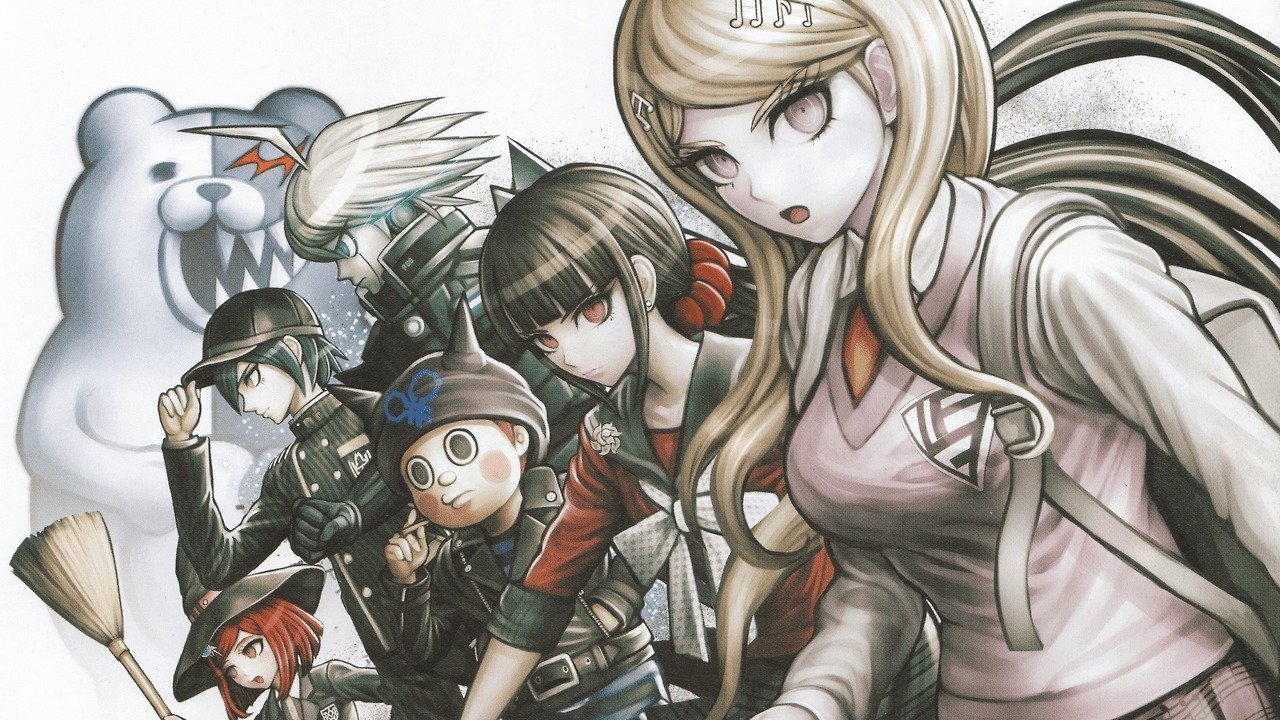Danganronpa is a series that has largely existed on its own terms. When the murder mystery series’ story expanded beyond the confines of its format, its creators looked to other genres and mediums to spin its tale, ending its original story in anime form with Danganronpa 3: The End of Hope’s Peak High School. While the latest game in the series, Danganronpa V3: Killing Harmony, was positioned as a new beginning for the series, one that dropped the original game’s setting in favour of something brand new, I ended up coming away from the game feeling that it was actually more of an extended goodbye. Technically Danganronpa V3 is a new story, but it doesn’t seem to exist as a way to start the series anew, but rather a thinly veiled look at the series, consumerism, and how market demand can push something beyond its original intent.
Using an elaborate meta-commentary Danganronpa V3 gets the final word on whether or not the franchise should continue. This ending, coupled with developer Spike Chunsoft’s treatment of the series in its seven years and creator Kazutaka Kodaka’s own statements, seems indicative of Danganronpa attempting to, for better or worse, die just as it lived: on its own terms.
To understand why Danganronpa V3 ends the way it does, it’s important to take a look at the life of the Danganronpa franchise.
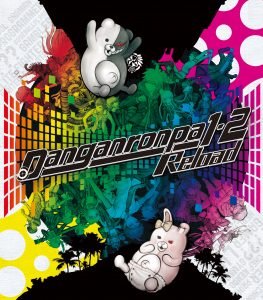
The first game in the series, 2010’s Danganronpa: Trigger Happy Havoc, focused on students of Hope’s Peak Academy. This prestigious school was a prison for a group of elite students who were forced into a killing game by Monokuma, a devious teddy bear with a fetish for despair. In order to escape the confines of Hope’s Peak, a student must murder a classmate without being caught by the survivors in a mock trial. This murder mystery was framed as a philosophical battle between hope and despair, and this theme was a throughline from the first game to its eventual conclusion in Danganronpa 3: The End of Hope’s Peak High School. Among the many mysteries Trigger Happy Havoc provided, its reveal that the world outside Hope’s Peak Academy had been decimated by a cult of Monokuma’s followers set the series on a difficult path to maintaining its integrity while also giving fans what they wanted out of it.
Danganronpa 2: Goodbye Despair recreates this killing game on an island, but doing so within the realm of the series’ current fiction proved elaborate, as it had to use a virtual reality simulation and escape the truth of its world to make it fit. It worked, but it bent the story just beyond its breaking point to create what the fans expected.
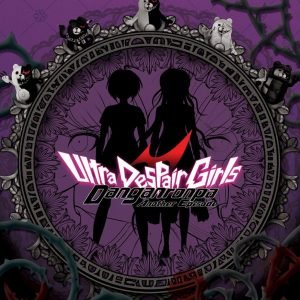
The following game, Danganronpa Another Episode: Ultra Despair Girls, dismissed the notion of the killing game, opting instead to focus on the outside world in a third-person shooter. The premise felt more honest to the grander story of the series, even if it didn’t draw the same praise the murder mystery entries did.
Ultimately, the story of Hope’s Peak Academy was concluded in Danganronpa 3: The End of Hope’s Peak High School, an animated series that forgoes gameplay entirely. The switch in medium allowed Danganronpa to create a story not restricted by mechanics as well as wrap up loose ends outside the format of the murder mystery that brought it prestige in the first place.
From 2012 to 2016, Spike Chunsoft went to great lengths to maintain the integrity of Danganronpa’s story. When it became clear that it would be a struggle to include the format of the killing game in the world of Hope’s Peak Academy a third time, Spike Chunsoft looked for other ways to continue and complete the story, even if it went against what people may have expected or wanted from Danganronpa.

Even as the series grew in popularity and notoriety, it went against market demand and kept its story intact. This idea of ownership and integrity plays a big part in Danganronpa V3’s conclusion and what it has to say about not giving into market demand. This is done by breaking the fourth wall allowing Danganronpa V3 to have an open and honest conversation with the audience.
In its final chapter Danganronpa V3 presents itself as the 53rd entry of the Danganronpa franchise. This caricature of Danganronpa is a long-running series that has been coming up with new gimmicks to keep the audience entertained, adding new mascot characters with no tangible purpose to the narrative other than to sell more merchandise, and creating new stories and mysteries to feed the audience’s yearning for the killing game.
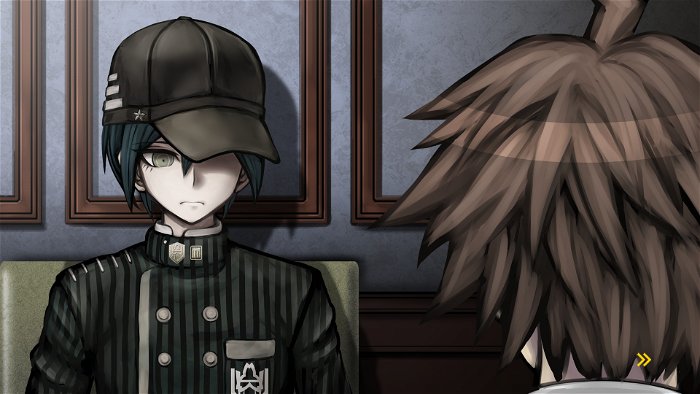
There’s a separation from the series’ original story in this world by presenting Danganronpa 1-3 as exactly what they were: a fictional story. In V3’s world, the Danganronpa franchise was so popular it went on for 53 iterations, escalating and moving beyond the medium of video games and anime to eventually become a reality show that fans audition for and participate in. Akin to something like Digimon Tamers, which treated previous seasons of the show as a television show the characters were fans of, Danganronpa V3’s story ostensibly has no bearing on the story of Hope’s Peak Academy as it puts the two on different planes of existence. However, while Digimon used this idea to get a fresh start without the baggage of its previous canon, Danganronpa V3 does that as well as making a series of bold statements about supply, demand, artistic integrity, and when viewed through a certain lens, turning a judgmental eye on its fan base in the process. With this, Danganronpa V3 edges toward flying too close to the sun with its commentary, as it puts those who supported it on blast.
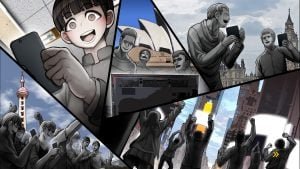
Not unlike the Danganronpa franchise, the audience, viewing the killing game through the eyes of one of the participants, is portrayed as an exaggeration of itself: obsessed, demanding, and indifferent to the suffering of the participants. Danganronpa V3 goes as far as to cast the fans as the mastermind of the death and despair of the series, with villain Tsumugi Shirogane saying, “As long as the world wants killing games, Danganronpa will not end.” This apparent animosity toward the viewers takes center stage of the final trial, as monitors showing their excited expressions surround the trial room, their comments float around as they cheer on the killing game in hopes of seeing another conflict between hope and despair play out.
For what it’s worth, much of the portrayal of the audience felt directed at a particular type of fan: one who treats the series, characters, and creators with a sort of crass entitlement. Comments from the audience seem to target a specific mindset, such as ones from near the end of the trial like, “This isn’t my Danganronpa. I’m a long-time fan,” and, “I’m not here for a damn lecture.” As such, I was able to distance myself from it all and see it for what it had to say, but it’s still hard to fault someone for feeling betrayed by this sort of portrayal.
In an interview with MyNavi [Translated by Tumblr user somerandomness77], Kodaka states that, “That world’s viewers aren’t [Danganronpa] players,” but it’s difficult to wrap my head around such a plot point is created inside a vacuum. It’s an exaggerated version of reality, but it’s hard to believe it could be written without an awareness as to what it would imply: that Danganronpa fans are supporting it into sellout status. Tsumugi goes on to quote the audience’s demanding nature in the trial, saying, “Don’t just end Danganronpa! We supported you! You owe us!” echoed by lamenting from the audience about how much they’ve given to the series and want to see it continue.
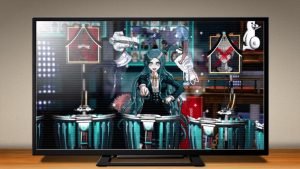
At the behest of the fans, the remaining survivors of Danganronpa V3 are given a choice similar to the one at the end of the first game: vote to execute Tsumugi, a representative of despair, or K1-B0, a symbol of hope. The audience’s comments kick into overdrive, with support for either decision coming in seemingly equal measure. This is what every Danganronpa leads to, so of course they’re amped and ready to see how it all plays out.
But it’s protagonist Shuichi Saihara who decides that in order to end the game and not feed into the audience’s desire to see hope and despair clash, each of them must refuse to vote. Neither side will be the victor, and, per the rules, will be executed for not participating.

It’s here that the intent of Danganronpa V3’s meta-commentary ends all hints at subtlety, as Shuichi repeatedly says this is to end Danganronpa, even if it means giving up their lives. The remaining survivors agree to Shuichi’s plan, and the audience, through K1-B0, follows through on it as well. Neither hope nor despair is deemed the victor, and the 53rd iteration of Danganronpa ends, taking the franchise with it. K1-B0 destroys the school, killing Tsumugi in the process, and the audience tunes out of the show en masse.
Danganronpa V3’s commentary feels too on the nose to not be indicative of a desire to end the franchise. Statements since the game’s launch in Japan from Kodaka seem to indicate this as well, having gone on record [translation via Tumblr user jinjojess] as saying he would like to take a break after having worked on the series for seven years. All-in-all, he appears happy with what he’s accomplished, saying everything he wanted to do was in V3.
In the games industry, we seldom get dignified goodbyes and endings. Series go on long enough to get cancelled or put on indefinite hiatus, but for others, a series will go on for decades aimlessly fulfilling a demand. Danganronpa V3 feels like a franchise using a final game to satirize itself and refuse to overstay its welcome. It presents a worst case scenario of what the series could become if it continues to exist just to satisfy the market.
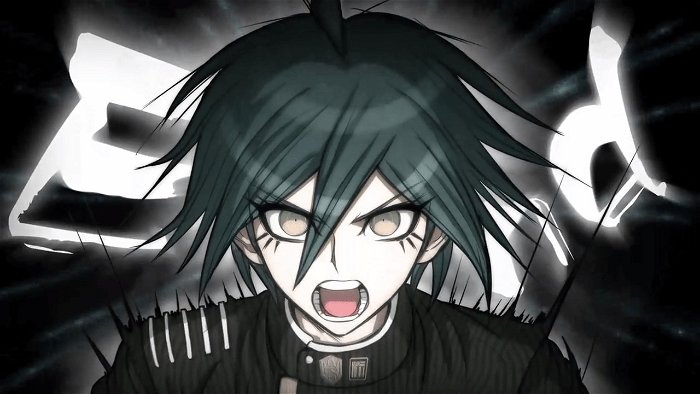
Danganronpa could have easily ended when it finished its first story and Spike Chunsoft simply moved onto something new, but Danganronpa V3 is in a privileged position where it doesn’t have to bring closure and can utilize a new setting to make a statement. I would have been more than happy with Danganronpa 3: The End of Hope’s Peak High School being the end, and I think if you’re satisfied with that ending, playing V3 feels more like a complimentary message from the developers than it does an essential piece of this puzzle. But despite its consumer-hostile leanings, Danganronpa V3 has a lot to say about market demand and artistic integrity, and how one informs the other. It’s incredibly bold with a message that extends far beyond the death and despair of Danganronpa, as it is applicable to several franchises across any medium.
There’s a powerful, if incredibly divisive, declaration being made here, and it’s one that could spark debate about market saturation and our willingness to let the media we consume go. Spike Chunsoft just has to deliver upon the solution it proposes. For all of this to matter—the setup, the message, and the fans who will likely be hurt by how it’s all delivered—Danganronpa has to die. Otherwise, it was all for nothing.
Liked this article and want to read more like it? Check out more by Kenneth Shepard, like his Life is Strange: Before the Storm review and his Hellblade: Senua’s Sacrifice review!
Want to see more videos? Subscribe to our YouTube channel and check out the First 15: The Evil Within 2, Forza Motorsport 7, and Cuphead!
Don’t forget to tune in every Friday the Pixels & Ink Podcast to hear the latest news, previews, and in-depth game discussions!
Never miss when new CGM articles go out by following us on Twitter and Facebook!
CGMagazine is Canada’s premiere comics and gaming magazine. Subscribe today to get the best of CGM delivered right to your door! Never miss when a new issue goes live by subscribing to our newsletter! Signing up gives you exclusive entry into our contest pool. Sign up once, you’ll have a chance to win! Sign up today!
